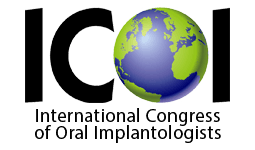Increasing Your Chances For Implant Success
At Reger Family Dental, we love offering our patients the many benefits of dental implants. However, due to factors such as disease, tooth loss, and extended denture or bridge wear, many patients may not have adequate jawbone or gum tissues for dental implant placement. If this is you, don’t worry, a supplemental procedure may help improve your candidacy for dental implants and increase your chances for implant success.
What Are Supplemental Procedures?
Supplemental procedures are surgeries we perform before installing dental implants. These surgeries are designed to correct issues that may disqualify you from receiving implants, such as jawbone deterioration (resorption) and gum tissue recession. By correcting these issues, supplemental procedures improve your oral health and help increase your chances for implant success.
How To Tell If You Need a Supplemental Procedure
The only way to know for certain if you need a supplemental procedure is to attend your dental implant consultation with Dr. Reger. During your consultation, Dr. Reger will be able to fully examine your mouth, review your medical history, and ask you about your smile goals in order to help you make the best decision for your dental health. Gum recession can often be spotted right away, but jawbone deterioration usually needs X-rays or CAT scans to uncover.
Tissue Grafting
Tissue grafting is a supplemental procedure designed to address loss of gum tissue after damage or recession has taken place. Here’s what to expect during a tissue graft:
- We’ll clean your mouth thoroughly and apply a local anesthetic to numb the surgical site.
- A small amount of healthy gum tissue will be taken from a certain part of the mouth depending on the type of graft. Regardless of the type of graft you receive, the graft will preserve the soft tissue in the dental implant area and make the gum tissues less likely to recede after oral surgery.
- Afterwards, you’ll be sent home to heal and Dr. Reger will check on your progress at a later date.
Types of Tissue Grafts
- During a connective tissue graft, a small flap will be cut into the roof of the mouth, tissue will be taken from behind the flap, and the flap will be sewn shut.
- During a free gingival graft, the tissue is taken directly from the roof of the mouth and no flap is made to hide the site of tissue removal.
- During a pedicle graft, a cut is made into a nearby area where gum tissue is abundant and stretched to cover the area where gum tissue is lacking.
Bone Grafting
Bone grafting is a supplemental procedure that combats jaw bone deterioration and the characteristic flattening of the jawbone after tooth loss, by encouraging your body to rebuild healthy jawbone volume. Here’s what to expect during a bone graft:
- We’ll clean your mouth out and apply a local anesthetic to numb the surgical site. We’ll make sure the anesthetic is working properly before proceeding.
- Dr. Reger will make a small incision where the bone needs to be strengthened and attach the donated bone.
- The incision will be closed, you’ll be sent home to heal, and Dr. Reger will check on your progress at a later date.
Types of Bone Grafts
- Xenografts use bone from an animal donor.
- Allografts use human bone from a donor that is not an identical twin.
- Alloplasts use synthetic material, typically a type of glass made from a naturally occurring mineral found in the body called hydroxyapatite.
- Autografts use bone from another part of your body.
- Growth factor enhanced bone grafts use a synthetic version of a naturally occurring protein found in your body, which causes the bone to grow where the implant site will be.
Supplemental Procedures For Implant Success
At Reger Family Dental, we want all of our patients to be able to enjoy the lifelong benefits of dental implants. Our supplemental procedures can help you successfully integrate dental implants so you can eat what you want, speak clearly, and smile confidently. To learn more about our supplemental procedures, or to schedule an appointment at our San Antonio office, call Reger Family Dental at 210-960-1300.
Frequently Asked Questions
How long does it take to recover from each supplemental procedure?
Generally, the recovery time for a dental bone graft can be anywhere from two weeks to over two months. If you’re receiving a graft before undergoing dental implant surgery, then Dr. Reger will have to wait until the bone has successfully fused with your jawbone in a process called osseointegration.
Since healing from a bone graft usually takes a few months, Dr. Reger will provide you with a temporary tooth replacement until your implants can be installed so you won’t have to live with missing teeth any longer. In contrast to bone grafts, you may heal from a tissue graft in as little as ten to fourteen days.
What is the success rate of bone and tissue grafts?
How can I increase my chances of implant success after a supplemental procedure?
- Avoid putting pressure on the surgical site until it is fully healed.
- Be gentle when cleaning your teeth.
- If you grind your teeth at night (bruxism), ask Dr. Reger about treatment options such as oral appliances.
- Avoid smoking and drinking alcohol before and after your supplemental procedure.
- Get plenty of rest after your surgery.
Are bone and tissue grafts painful?
If you find that your post-operative pain is unbearable or is lasting longer than a few days, it may indicate a complication. Contact us at our San Antonio office as soon as possible by dialing 210-960-1300 and we’ll do whatever we can to resolve any issues you may be having.




